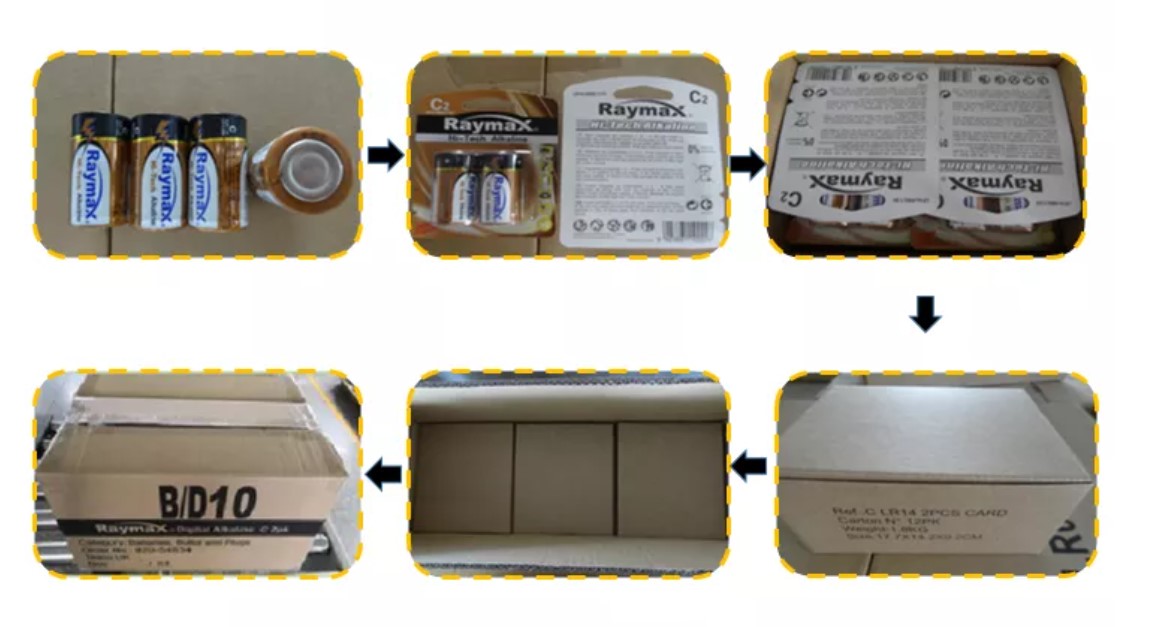Email format error
Email cannot be empty
Email already exists
6-20 characters(letters plus numbers only)
The password is inconsistent
Email format error
Email cannot be empty
Email does not exist
6-20 characters(letters plus numbers only)
The password is inconsistent

Alkaline battery & Button cell manufacturing process-News

The Evolution and Applications of Hi-Tech Batteries
Introduction to No Mercury Added Batteries
In today's world, where technological devices are integral to our daily lives, batteries play a crucial role in powering everything from smartphones to electric vehicles. However, the environmental impact of traditional batteries, particularly those containing mercury, has raised significant concerns. This has prompted the development and adoption of no mercury added batteries, which offer a cleaner and safer alternative without compromising on performance or reliability.
What are No Mercury Added Batteries?
No mercury added batteries, as the name suggests, are battery products that do not contain mercury in their composition. Mercury, a highly toxic substance, has traditionally been used in batteries to improve conductivity and stability. However, its use poses serious environmental and health risks, particularly when batteries are disposed of improperly.
Modern advancements in battery technology have made it possible to eliminate mercury while maintaining or even enhancing battery performance. These batteries typically utilize alternative materials and formulations that achieve the desired electrical characteristics without relying on mercury.
The Evolution of Battery Technology towards Mercury-Free Options
The journey towards mercury-free batteries has been marked by significant technological advancements and regulatory developments. Historically, mercury was widely used in batteries due to its ability to improve electrical conductivity and prevent corrosion. However, the detrimental effects of mercury on the environment and human health became increasingly apparent over time.
As awareness of environmental issues grew, researchers and manufacturers began exploring alternative materials and processes to create batteries that are safer and more sustainable. This led to the development of new battery chemistries, such as lithium-ion and nickel-metal hydride, which do not require mercury and offer improved performance characteristics.
Key milestones in this evolution include the introduction of regulations limiting mercury content in batteries, such as the European Union's Battery Directive. These regulations have incentivized innovation and spurred the adoption of cleaner battery technologies across industries.

Comparison of No Mercury Added Batteries vs. Traditional Batteries
When comparing no mercury added batteries with traditional mercury-containing batteries, several key factors come into play: performance, cost, and environmental impact.
Performance: No mercury added batteries are designed to perform on par with or better than traditional batteries in terms of capacity, lifespan, and reliability. Advances in technology have enabled manufacturers to optimize battery chemistry and design, resulting in improved efficiency and power output.
Cost: Initially, the cost of no mercury added batteries may be slightly higher than traditional batteries due to the use of newer materials and manufacturing processes. However, the long-term cost benefits often outweigh the initial investment, as these batteries tend to last longer and require less frequent replacement.
Environmental Impact: Perhaps the most significant advantage of no mercury added batteries is their reduced environmental impact. Mercury is a persistent environmental pollutant that can bioaccumulate in ecosystems and pose risks to wildlife and human health. By eliminating mercury, these batteries help mitigate these risks and contribute to cleaner and safer waste disposal practices.
Recycling and Disposal of No Mercury Added Batteries
Proper disposal and recycling of batteries, including no mercury added batteries, are essential to minimize environmental impact and maximize resource recovery. Unlike traditional batteries that contain hazardous materials like mercury, no mercury added batteries are generally safer to handle and dispose of.
Best practices for recycling include separating batteries from other household waste and depositing them in designated recycling centers or drop-off locations. Many countries and regions have established regulations and programs to facilitate battery recycling and ensure compliance with environmental standards.
Recycling not only helps prevent harmful substances from entering the environment but also allows for the recovery of valuable materials like metals and plastics, which can be reused in the manufacturing of new batteries or other products.
How to Choose and Use No Mercury Added Batteries
Selecting the right no mercury added batteries involves considering factors such as battery type, size, and intended use. Here are some tips for consumers:
Consider Battery Type: Choose a battery chemistry (e.g., lithium-ion, nickel-metal hydride) that best suits your device and usage requirements. Each type offers distinct advantages in terms of performance and energy efficiency.
Check Battery Specifications: Pay attention to battery specifications such as voltage, capacity (mAh), and rechargeability. These factors determine how long the battery will last on a single charge and how well it will perform under different conditions.
Follow Manufacturer Recommendations: Always follow the manufacturer's guidelines for using and storing batteries to ensure safety and optimize performance. Store batteries in a cool, dry place away from direct sunlight and extreme temperatures.
Dispose of Batteries Properly: When batteries reach the end of their useful life, recycle them according to local regulations. Do not dispose of batteries in household trash or incinerate them, as this can release harmful chemicals into the environment.
Conclusion
No mercury added batteries represent a significant advancement in battery technology, offering consumers a safer and more sustainable option for powering their electronic devices. By eliminating mercury, these batteries contribute to cleaner environments and healthier communities while meeting the growing demand for eco-friendly products.
As awareness of environmental issues continues to rise, the adoption of no mercury added batteries is expected to increase, driven by both regulatory requirements and consumer preferences for sustainable products. By choosing and using these batteries responsibly, consumers can play a crucial role in promoting a greener future and reducing their carbon footprint.
In the years ahead, ongoing research and innovation in battery technology are likely to further enhance the performance and sustainability of no mercury added batteries, paving the way for a cleaner and more energy-efficient future.

